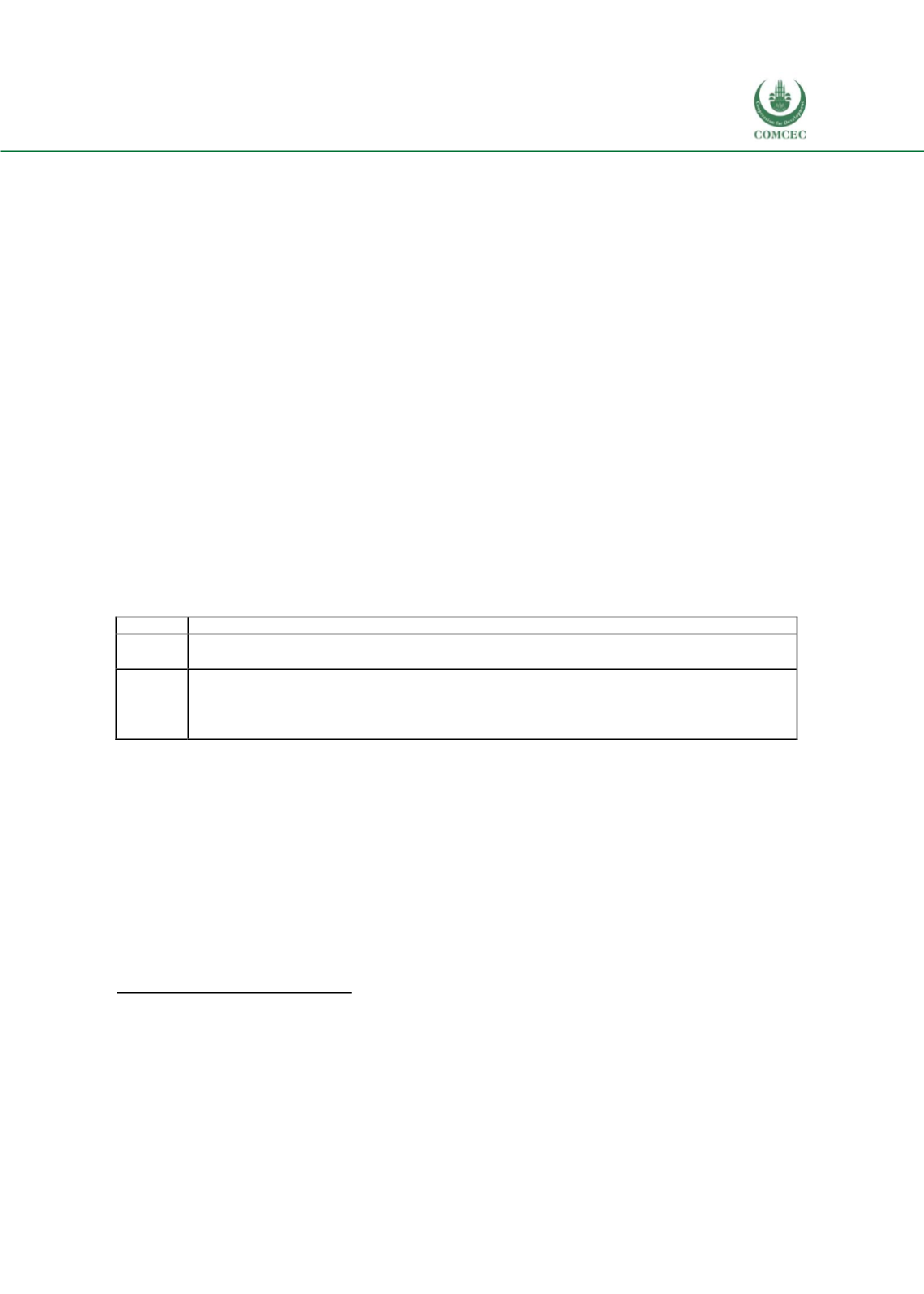

Increasing the Resilience of the Food Systems
In Islamic States in Face of Future Food Crises
93
and nutritional insecurity; reinforcing social security; encouraging employment; decreasing
barriers to access for social services and basic social infrastructure; intensifying activities that
target vulnerable groups; and fortifying consolidation of legislativeand regulatory frameworks.
387
Even though the GoN partner, the National Institute of Agronomic Research (INRAN), was less
effective at training farmers than at assisting in field research , they providedmaterials (such as
Purdue improved cowpea storage (PICS) bags), assisted with input selection and training, and
conducted production assessments.
388
The GoN—in partnershipwith USAID—worked on conservation agriculture that was appreciated
by farmers, who demonstrated swift uptake of many of the recommended practices .
389
The GoN and its partnersworked togrant women access to landfor gardening and farming through
advocacy with stakeholders; arranging land allocation to gardening groups; and supporting
women’s access to savings, credit, and livelihoods to rent or purchase land.
390
Cooperation
The efforts of the GoN, their technical andfinancialpartners, anddecentralization actors show that
the Sahel has significant potential to support stakeholders (municipalities, farmers, producer
organizations, etc.) todevelop a rural activity, butcapacity is lacking inmanyareas. Synergies from
World Bank and EU projects on resilience may still be capitalized upon.
Table 48: Niger Cooperation Examples
Entity
U.S. involvement
UN FAO
Niger hosts a liaison office for the UNFAO and works closely with the organization to provide
information and share best practices around the world to increase food security.
Feed the
Future
Niger works with the U.S. government’s global food and food security initiative, working with
partner countries to develop their agriculture sectors. This has a notable impact, including
working with the Nigerien Government to improve agriculture and food security for over 2
million farmers.
The European Union and World Bank fund the GoN directly with budget support. Typically, the
government uses that funding to form a project; theimplementingministry for food security is the
Ministry of Agriculture and Livestock. Todate, over 40 noteworthy governmentprojects havebeen
deployedwith donor funding, variously using basket funds, loans, or outright grants.
391
Thereare
still about 20 projects operating. The largest single project is the National Program on Drinking
Water Provision and Hygiene,which is funded by a $1.2 billion loan from the AfricanDevelopment
Bank.
392
387
USAID. (2017).
USAID Office of Food for PeaceFood Security Desk Review for Niger
. Retrieved from:
https://www.usaid.gov/sites/default/files/documents/1866/FFP-Niger-Food-Security-Desk-Review-Oct2017.pdf388
Ibid
389
Ibid
390
Ibid
391
Feed The Future. (2018).
Global Food Security Strategy (GFSS) Niger Country Plan
. Retrieved from:
https://www.usaid.gov/sites/default/files/documents/1867/Niger_Country_Plan_Final_Public_Scrub_Clean_WSEdits_8.13.pdf
392
Ibid.
















